Staying Connected: The Best Communication Tools for Remote Social Media Jobs
Working remotely in social media jobs can sometimes feel like a juggling act with all the tasks and communication channels involved. Did you know that 86% of employees find they’re most productive when they work alone? Well, we’ve got your back! This blog post gives you a thorough look at various communication tools designed to make remote work seamless and efficient.
Stick around as we navigate through this world of virtual connectivity to enhance your productivity one tool at a time!
Key Takeaways
- Messaging apps like Slack, Google Hangouts, and HipChat facilitate real – time communication and collaboration among remote social media teams.
- Project management tools such as Trello and Asana help organize tasks, deadlines, and team roles in remote social media jobs.
- Video conferencing tools like Zoom and Skype enable virtual face-to-face meetings for better team connectivity in remote social media work.
- Social media management tools like Hootsuite, Buffer, and CoSchedule streamline the process of posting marketing content and managing multiple social media accounts.
Importance of Communication Tools in Remote Social Media Jobs
Effective communication tools serve as the backbone for remote jobs, especially in social media management. They bridge the gap created by physical distance and make collaboration possible from multiple locations worldwide.
In real-time, these tools allow teams to discuss ideas, share feedback, solve problems collectively, and work towards common goals.
For instance, messaging apps such as Slack and HipChat have revolutionized virtual communication by providing a platform for one-on-one chats and group conversations. They offer an efficient alternative to traditional email systems that can often become cluttered.
With their instant messaging feature and ability to create dedicated channels for different topics or projects, they enhance productivity within remote teams.
Project Management tools like Trello or Asana are another game changer in this field. They provide a visual way of tracking project progress while making sure everyone on the team is updated with the latest information about tasks assigned to them or scheduled deadlines.
Video conferencing platforms such as Zoom or Microsoft Teams bring back the human element into interactions by enabling virtual face-to-face meetings. These applications ensure idle time wastage due to miscommunication is minimized while boosting team morale through personal interaction.
Social Media Management tools play an essential part too in digital marketing activities of businesses today where content needs scheduling months ahead but could require changes at short notice based on trends emerging online every day.
Tools like HootSuite provide this flexibility while keeping track of various social media accounts across different platforms all at once – increasing efficiency manifold for those managing these remotely.
Categories of Communication Tools
The categories of communication tools for remote social media jobs include messaging, project management, video conferencing, and social media management.
Messaging
Messaging apps like Slack, Google Hangouts, and HipChat have transformed the way remote social media teams communicate. These tools are more effective than traditional emails for discussing tasks or even for quick check-ins.
Not only can employees engage in one-on-one chats with colleagues, but they can also participate in group conversations.
These versatile messaging platforms allow users to create channels dedicated to specific topics, which helps prevent information overload and keeps discussions focused. For instance, a team could set up separate channels for different social media campaigns or clients.
Every conversation is organized and easily accessible – a crucial feature that facilitates seamless communication among distributed teams across various time zones.
Project Management
Project management tools, such as Asana and Trello, dominate the remote workspace with their ability to efficiently organize tasks, deadlines, and team roles. These indispensable assets offer a clear picture of responsibilities, thereby preventing confusion in distributed teams.
The digital kanban board system employed by these tools visualizes workflow stages for better organization. Using project management software improves productivity while ensuring each team member stays connected despite working remotely.
Accelerating progress in remote social media jobs is easier than ever using these cloud-based communication platforms that seamlessly integrate task milestones within an agile scheme.
Video Conferencing
Video conferencing tools, such as Zoom and Skype, have become vital aspects of remote social media work. They facilitate quick group discussions and allow teams to host virtual face-to-face meetings regardless of their geographical locations.
These platforms provide advanced features such as screen sharing, real-time messaging, and recording options. This technology thus eliminates the barriers set by distance, making collaboration more effective and efficient.
The use of video conferencing enhances communication clarity among team members—visual cues help in understanding the context better than voice calls or emails alone can offer.
Social Media Management
Social media management tools are crucial for remote social media jobs. Tools like Hootsuite, Buffer, and CoSchedule help streamline the process of posting marketing content and managing social media accounts effectively.
These tools allow remote teams to stay organized by scheduling posts, monitoring engagement, and analyzing performance all in one place. With the ability to track progress and collaborate with team members remotely, social media management tools enhance productivity and ensure that remote social media teams can efficiently carry out their job tasks.
Top Communication Tools for Remote Social Media Jobs
Effective communication is crucial for remote social media jobs. Here are the top communication tools that can help remote teams collaborate and stay connected:.
- Slack: A messaging app that allows real-time communication, file sharing, and integration with other tools.
- Flock: Provides team messaging, video conferencing, and task management features in one platform.
These tools enhance collaboration and streamline communication among remote teams in social media jobs. They enable quick exchanges of information and facilitate seamless coordination on projects.
Messaging Tools
Slack and Flock are popular messaging tools used in remote social media jobs.
Slack
Slack is a widely used messaging app that offers a range of features for remote social media jobs. With file sharing, collaboration tools, and effective communication capabilities, Slack is more efficient than email when it comes to staying connected with your remote team.
It allows you to have one-on-one chats or group conversations, making it easy to share ideas and updates with multiple people simultaneously. To keep discussions organized, channels can be created on Slack with specific topics, eliminating clutter and tangents.
As a popular choice among professionals, Slack provides an intuitive user interface for seamless communication in remote work environments.
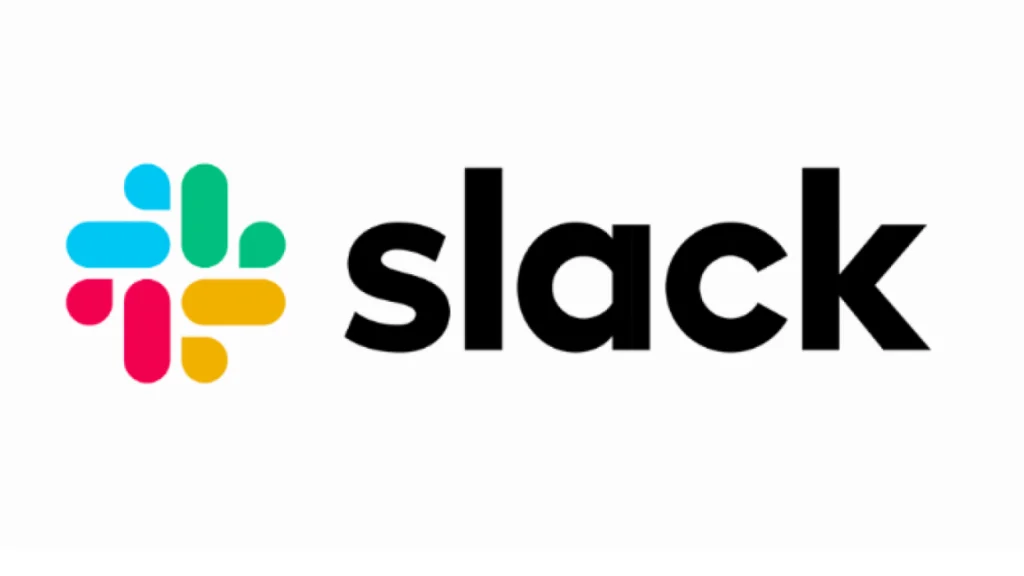
Features & Benefits of Slack
Slack provides several features and benefits that make it an excellent communication tool for remote social media jobs. Here are some of its key features and advantages:
- Instant messaging: Slack allows team members to communicate in real-time through instant messaging, ensuring quick and efficient communication.
- Channels: Specific channels can be created in Slack based on topics or projects, allowing teams to organize discussions and eliminate clutter.
- File sharing: With Slack, users can easily share files and documents, making collaboration seamless and hassle-free.
- Integration with other tools: Slack integrates with various productivity tools such as Google Suite, SharePoint, Dropbox, and Box, enabling easy sharing and collaboration across platforms.
- Notifications: Slack sends notifications for new messages, mentions, or updates, ensuring that team members stay informed and up-to-date on project progress.
- Search functionality: Slack’s search feature enables users to quickly find past conversations or files shared within the platform, saving time and effort.
- Video conferencing integration: Slack integrates with video conferencing tools like Zoom and Microsoft Teams, allowing for virtual face-to-face meetings without switching between applications.
- Customization options: Users can customize their Slack interface by setting preferences for notifications, themes, and app integrations according to their individual needs.
- Mobile apps: Slack offers mobile apps for iOS and Android devices, enabling team members to stay connected and collaborate on the go.
- Security measures: Slack ensures secure communications by offering data encryption (128-bit AES) and TLS encryption during transit. It is also SOC 2-compliant, giving users peace of mind regarding data security.
Flock
Flock is a popular messaging tool that is commonly used in remote social media jobs. It provides a platform for team communication, allowing remote workers to stay connected and collaborate effectively.
With Flock, communication becomes more than just conversations – it can be turned into actionable items, ensuring that tasks are completed efficiently. This makes Flock an invaluable tool for remote teams in the social media industry who need seamless communication and effective collaboration to get their work done.
Features & Benefits of Flock
Flock is a communication tool that offers several features and benefits for remote social media jobs.
- Real-Time Messaging: With Flock, team members can communicate in real-time through instant messaging, allowing for quick and efficient collaboration.
- Team Channels: Flock provides the ability to create separate channels for different projects or teams, ensuring that discussions and updates are organized and easily accessible.
- File Sharing: Flock allows users to share files and documents within the platform, eliminating the need for email attachments or external file-sharing services.
- Task Management: Flock enables users to create tasks, assign them to team members, set due dates, and track progress. This helps in keeping projects on track and ensures accountability within the team.
- Video Conferencing: Flock offers video conferencing capabilities, allowing remote team members to have face-to-face meetings and discussions from anywhere.
- Integrations: Flock integrates with various other tools such as Google Drive, Trello, Asana, and more, making it easy to connect different platforms and streamline workflows.
- Mobile App: Flock has a mobile app available for Android and iOS devices, enabling team members to stay connected even when they are on the go.
Project Management Tools
Asana and Trello are popular project management tools used in remote social media jobs.
Asana
Asana is a communication tool specifically designed for remote social media jobs. It plays a crucial role in helping remote teams stay updated on project progress. With Asana, tasks can be tracked easily, including assignments, due dates, and team members’ responsibilities.
This makes task management much simpler and more efficient for everyone involved. Additionally, Asana offers a visual representation of project progress and tasks through its boards system.
The platform also has a user-friendly interface with social network-like features that encourage easy communication and collaboration among team members.
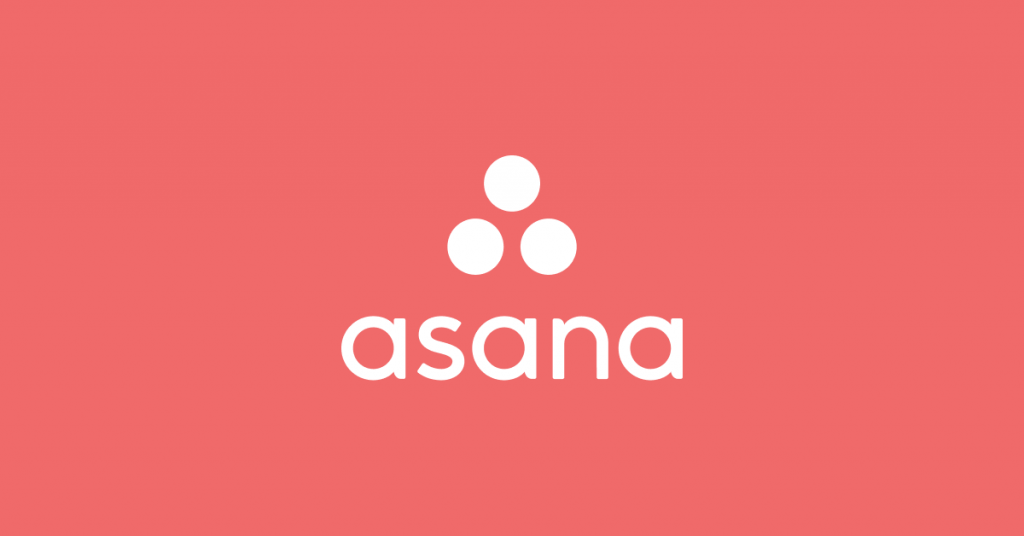
Features & Benefits of Asana
Asana offers a range of features and benefits that make it an excellent project management tool for remote social media jobs. Here are some key features and benefits of Asana:
- Task Management: Asana helps you organize and track tasks, making it easy to assign responsibilities to team members and set due dates.
- Collaboration: With Asana, team members can collaborate seamlessly by commenting on tasks, sharing files, and updating progress in real-time.
- Project Tracking: Asana provides a clear overview of project progress, allowing you to track milestones, deadlines, and dependencies.
- Customizable Workflows: You can create custom workflows in Asana to match your team’s unique processes, ensuring smooth execution of projects.
- Integration with Other Tools: Asana integrates with various other tools like Google Drive, Slack, and Dropbox, making it easier to centralize project documents and streamline communication.
- Mobile Accessibility: Asana has a user-friendly mobile app that allows you to manage tasks and stay connected with your team even when you’re on the go.
- User Permissions: With Asana’s user-level permission feature, you can control who has access to specific projects or tasks, ensuring data security within your team.
- Notifications and Reminders: Asana sends notifications and reminders for upcoming deadlines or changes in the project status, keeping everyone informed and accountable.
- Visualizations: Asana provides visualizations like progress charts and timelines that give you a comprehensive view of your projects at a glance.
- Team Productivity Analytics: Using Asana’s analytics feature, you can analyze your team’s productivity trends, identify bottlenecks, and make data-driven decisions for improvement.
Trello
Trello is a widely used project management software that plays a crucial role in remote social media jobs. It helps teams organize their workflow and track progress effectively. With Trello, remote teams can easily communicate and collaborate on tasks, turning communication into actionable items.
This tool, along with other communication apps like phone calls, emails, and file sharing platforms, allows remote social media professionals to stay connected and updated on project developments.
By using Trello’s project boards, teams can visualize their tasks and deadlines, ensuring everyone is on the same page. Its user-friendly interface makes it easy for team members to navigate and contribute to projects seamlessly.
Features & Benefits of Trello
Trello is a popular tool used in remote social media jobs because it offers a range of features and benefits that enhance productivity and collaboration. These features and benefits include:
- Organization: Trello allows users to create boards, lists, and cards to organize their tasks and workflows effectively. This feature helps remote social media teams stay organized and ensures that nothing falls through the cracks.
- Collaboration: With Trello, team members can easily collaborate on projects by adding comments, attachments, due dates, and labels to cards. This fosters effective communication and encourages teamwork in remote settings.
- Visual Interface: Trello provides a visual interface where users can see their tasks and projects at a glance. This feature enables remote social media teams to have a clear overview of their workload and progress.
- Integration: Trello can be integrated with other communication tools like Slack, Google Hangouts, and Zoom. This integration allows for seamless communication between team members and enhances collaboration within the remote social media job.
- Task Prioritization: Trello enables users to prioritize tasks by assigning due dates, labels, and tags to cards. This helps remote social media teams focus on critical tasks first and improves overall productivity.
- Accessibility: Trello is accessible from any device with internet access, making it convenient for remote workers to access their tasks and collaborate with team members anytime, anywhere.
- Notifications: Trello sends notifications to users when there are updates or changes made to cards or boards. This feature ensures that remote social media teams stay updated on project developments in real-time.
- Customizability: With Trello’s customizable features like backgrounds, labels, and checklists, users can personalize their boards according to their preferences or specific project needs.
- User-Friendly Interface: Trello has a user-friendly interface that makes it easy for both tech-savvy individuals and those new to project management tools to navigate the platform effortlessly.
- Free Version Available: Trello offers a free version with basic features, making it a cost-effective option for remote social media jobs with limited budgets.
Video Conferencing Tools
Video Conferencing Tools are essential for remote social media jobs, allowing teams to communicate face-to-face and collaborate effectively. Discover the top video conferencing tools and their features in our blog!
Zoom
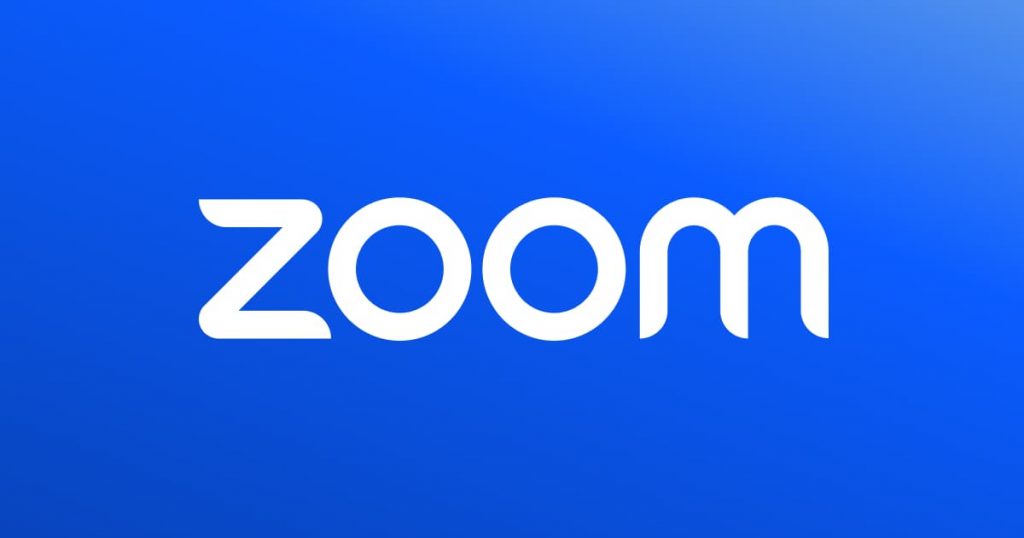
Zoom is a widely used video conferencing tool that has become essential for remote social media jobs. It offers a range of features that make virtual meetings and collaboration smooth and efficient.
With Zoom, you can easily schedule and host video conferences with team members or clients from anywhere in the world. The platform also allows for screen sharing, which is particularly useful when discussing social media strategies or analyzing data together.
In addition, Zoom provides options for recording meetings, ensuring important discussions can be revisited later if needed. Encryption is another key feature offered by Zoom, keeping your conversations secure and confidential.
Features & Benefits of Zoom
Zoom offers a range of features and benefits that make it a popular choice for remote social media jobs:
- High – quality video and audio capabilities for virtual meetings.
- Screen sharing functionality for presentations and collaborations.
- Option to record meetings for reviewing discussions or sharing with absent team members.
- User – friendly interface, making it easy for remote workers to navigate and use.
- Integrations with other commonly used tools in remote social media jobs, such as Slack and Google Drive, enhancing workflow and collaboration.
Skype
Skype is a popular communication tool that offers a range of features for remote social media jobs. With instant messaging, group chat, video conferences, and file sharing capabilities, Skype allows for efficient and seamless communication among team members.
It is often associated with other video conferencing tools like Zoom, Microsoft Teams, Google Meet, and BlueJeans. Additionally, Skype offers free calls between Skype users on mobile apps or computers.
This makes it a convenient option for quick and easy communication in remote teams, including those in social media roles.
Features & Benefits of Skype
Skype, a popular communication tool for remote social media jobs, offers a range of features and benefits that enhance collaboration and productivity among team members. Some key features and benefits of Skype include:
- Instant Messaging: With Skype’s instant messaging feature, team members can quickly communicate and exchange information in real-time, improving efficiency and reducing email clutter.
- Group Chat: Skype allows for group chat functionality, making it easy for remote teams to have discussions, share updates, and brainstorm ideas together.
- Video Conferences: One of the standout features of Skype is its video conferencing capability. Team members can connect face-to-face through high-quality video calls, fostering a sense of connection and enabling more effective communication.
- File Sharing: Skype enables seamless file sharing among team members. This feature allows for the quick exchange of documents, images, and other files necessary for collaborative work.
- Recording: Skype offers the ability to record meetings and conversations. This feature is valuable for remote social media jobs as it allows team members to review important discussions and refer back to them later.
- Encryption: Skype prioritizes security by providing data encryption during calls and messages. This ensures that sensitive information shared during remote work remains secure from unauthorized access.
- Meeting Limitations: In order to maintain control over meetings, Skype allows hosts to set limitations such as participant permissions, meeting durations, and access codes. This ensures that virtual meetings are organized, focused, and efficient.
Social Media Management Tools
Social media management tools play a crucial role in efficiently managing and organizing social media content, scheduling posts, analyzing performance, and engaging with followers.
monday.com
monday.com is a widely used project management software that is specifically beneficial for remote social media jobs. With its clear and simple communication features, it helps remote teams collaborate effectively.
Different plans are available on monday.com, allowing users to choose the specific features that suit their needs. By using monday.com, remote social media workers can streamline their work processes and keep tasks organized.
Moreover, this platform can integrate with other popular social media management tools like Trello and Asana, making it even more convenient for remote teams in the social media industry.
Features & Benefits of monday.com
monday.com offers a range of features and benefits that are perfect for remote social media jobs:
- Clear and simple communication: The platform provides a visual language that makes communication easy to understand. This helps remote teams stay connected and collaborate effectively.
- Task management: monday.com allows users to create and assign tasks, set due dates, and track progress. This ensures that everyone is on the same page and deadlines are met.
- File sharing: With monday.com, team members can easily share files and documents. This eliminates the need for separate file storage systems and makes collaboration seamless.
- Progress tracking: The platform provides a clear overview of project progress, allowing team members to see how their work is contributing to the overall goals. This keeps everyone motivated and focused on achieving results.
- Convenience of remote access: Since monday.com is cloud-based, it can be accessed from anywhere with an internet connection. This makes it ideal for remote social media jobs where team members may be working from different locations.
- Integration with other tools: monday.com can be integrated with other social media management tools, such as Hootsuite or Buffer. This enhances communication and streamlines workflow by consolidating all necessary tools in one place.
- Regular team conference calls: Communication is vital in remote teams, and monday.com understands this. The platform allows for regular team conference calls, ensuring that important discussions can take place even when team members are not physically present in the same location.
Hootsuite
Hootsuite is a social media management tool that is essential for remote social media jobs. It simplifies the process of posting and scheduling marketing content, allowing users to plan their content in advance.
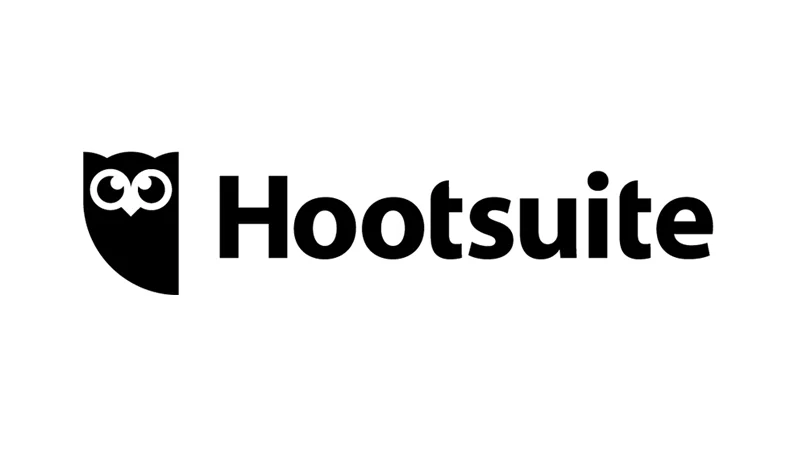
With Hootsuite, you can manage multiple social media platforms from one dashboard, saving time and effort. This powerful tool enables remote teams to collaborate effectively and maintain a consistent online presence across different channels.
Hootsuite is just one example of the communication tools mentioned in this article that can greatly enhance productivity in remote social media jobs.
Features & Benefits of Hootsuite
Hootsuite offers a range of features and benefits that make it a valuable communication tool for remote social media jobs. These include:
- Scheduling and Managing Posts: Hootsuite allows users to schedule posts in advance, ensuring a consistent presence on social media platforms. This feature helps remote workers save time and stay organized.
- Effective Communication and Collaboration: Hootsuite provides features for team collaboration, allowing remote workers to communicate efficiently. Users can create channels with specific topics to streamline communication, reducing clutter and confusion.
- Integration with Popular Social Media Platforms: Hootsuite is integrated with major social media platforms like Facebook, Twitter, Instagram, and LinkedIn. This integration enables users to manage all their social media accounts from one centralized platform.
- Organization and Project Progress Tracking: With Hootsuite, remote social media workers can stay organized by keeping track of project progress. The tool offers features that allow users to monitor engagement, analyze data, and measure the success of social media campaigns.
- Time-saving Automation: Hootsuite offers automation features that help streamline repetitive tasks. Users can automate posting schedules, monitor brand mentions, and engage with their audience more efficiently.
- Analytics and Reporting: Hootsuite provides robust analytics and reporting features that enable remote social media workers to track the performance of their campaigns. Users can measure metrics such as engagement rates, reach, clicks, and conversions.
How to Choose the Right Communication Tool for Your Team
To choose the right communication tool for your team, consider the specific needs and preferences of your remote social media job. Start by assessing what type of communication is most important for your team, whether it’s messaging, project management, video conferencing, or social media management.
Take into account the size of your team and its work style. Next, research different tools within each category and compare their features and benefits. For messaging apps, options like Slack are known for their user-friendly interface and integration with other tools.
Project management tools like Asana offer features such as task milestones and agile project management methods. Video conferencing tools like Zoom provide virtual face-to-face meetings with high-quality audio and video.
Additionally, consider the compatibility of the communication tool with other software or platforms that your team uses. Integration with social media platforms may be essential if you need to manage multiple accounts efficiently.
Security should also be a significant factor in making your decision; look for tools that prioritize data encryption and compliance standards such as SOC 2.
Lastly, seek feedback from colleagues who have used various communication tools to get real-world insights into their usability and effectiveness. This can help inform your decision-making process by providing first-hand experiences from individuals facing similar challenges in remote social media jobs.
Consider conducting a trial period or demo before committing to ensure that the chosen tool meets all necessary requirements for efficient communication within your team’s unique context.
The Role of Communication Tools in Enhancing Productivity
Effective communication tools play a crucial role in enhancing productivity for remote social media jobs. These tools provide remote teams with the means to collaborate, share information, and stay connected regardless of geographical barriers.
Messaging apps are particularly effective in facilitating quick and efficient communication between team members, allowing for both one-on-one chats and group conversations. Additionally, project management tools help remote teams stay updated on project progress by providing a centralized platform where tasks can be assigned, deadlines can be set, and resources can be shared.
By utilizing these communication tools, remote workers are able to streamline their workflows and ensure that everyone is on the same page, ultimately leading to increased productivity and efficiency in their work.
The Impact of Communication Tools on Team Collaboration
Effective communication tools have a significant impact on team collaboration. By providing remote workers with easy and efficient ways to communicate, these tools enhance teamwork and productivity.
Messaging apps, for example, allow team members to have real-time conversations and share important updates instantly. This ensures that everyone is on the same page and can contribute effectively to the project.
Project management tools help remote teams stay organized by providing a centralized platform where tasks, deadlines, and progress can be monitored. This fosters collaboration as it allows team members to coordinate efforts, assign responsibilities, and track project milestones together.
Additionally, video conferencing tools enable virtual face-to-face meetings, which promote better understanding among team members despite being physically apart. Overall, communication tools play a crucial role in breaking down barriers of distance and time zones to create a collaborative environment for remote social media jobs.
Key points:
- Communication tools enhance teamwork and productivity in remote social media jobs.
- Messaging apps enable real-time conversations and instant updates.
- Project management tools centralize tasks and facilitate coordination.
- Video conferencing tools promote better understanding through virtual face-to-face meetings.
- Communication tools break down barriers of distance for collaboration.
Challenges of Using Communication Tools and How to Overcome Them
Using communication tools in remote social media jobs can pose certain challenges. One challenge is the potential for miscommunication or misunderstandings due to the lack of non-verbal cues and tone of voice that are present in face-to-face interactions.
This can lead to confusion and missed deadlines if messages are not clear. To overcome this, it is important to be proactive in clarifying any uncertainties through additional messages or asking for confirmation.
Another challenge is the possibility of technical issues such as poor internet connection or software malfunctions. These interruptions can disrupt productivity and delay communication between team members.
To address this, it is recommended to have backup plans in place, such as alternative communication platforms or offline methods of sharing information like email or phone calls.
Additionally, maintaining effective collaboration with distributed teams may be challenging due to different time zones and work schedules. This can hinder real-time communication and result in delays in decision-making and problem-solving.
To overcome this challenge, it is crucial to establish clear expectations regarding availability and response times across team members. Utilizing project management tools with shared calendars can also help coordinate tasks efficiently.
Lastly, ensuring data security when using communication tools is a concern for remote social media jobs where sensitive information might be shared among team members. To address this challenge, it is essential to choose secure platforms that offer encryption and follow industry-standard security protocols.
While these challenges may arise when using communication tools for remote social media jobs, being proactive about addressing them through effective communication strategies will help ensure smooth workflow and successful collaboration within the virtual team environment.
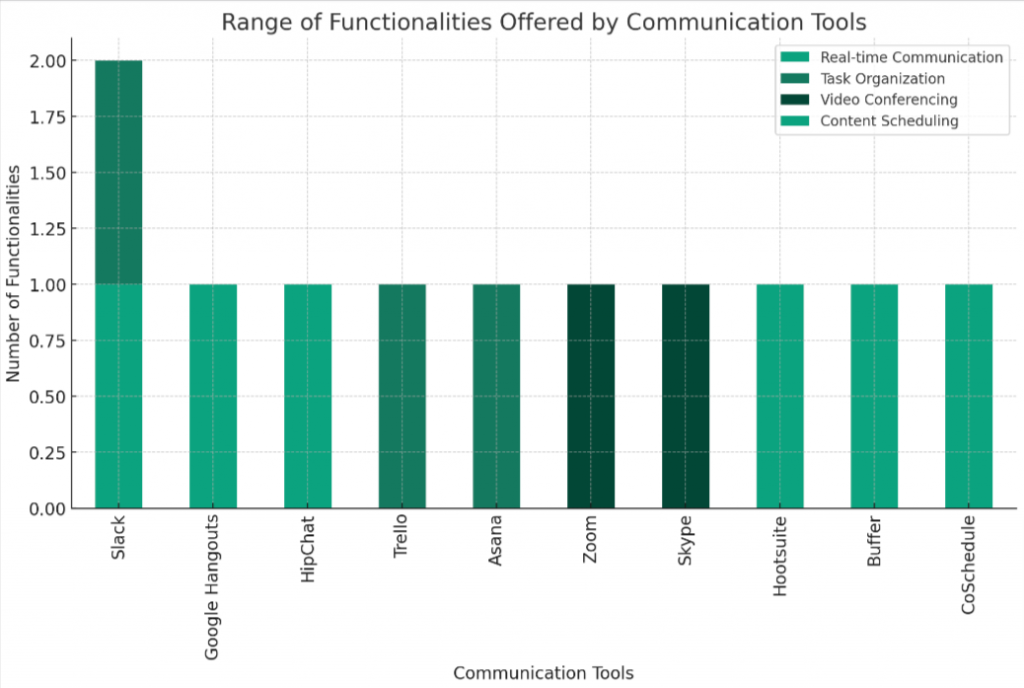
Conclusion
In conclusion, effective communication tools play a crucial role in the success of remote social media jobs. Messaging apps like Slack, Google Hangouts, and HipChat provide real-time communication and collaboration options.
Project management tools such as Trello, Teamwork, Asana, Jira, and monday.com keep remote teams organized and on track. Video conferencing tools like Zoom and Skype enable virtual face-to-face meetings for better team connectivity.
By utilizing these communication tools, remote social media professionals can enhance their productivity and foster effective collaboration within their virtual teams.

